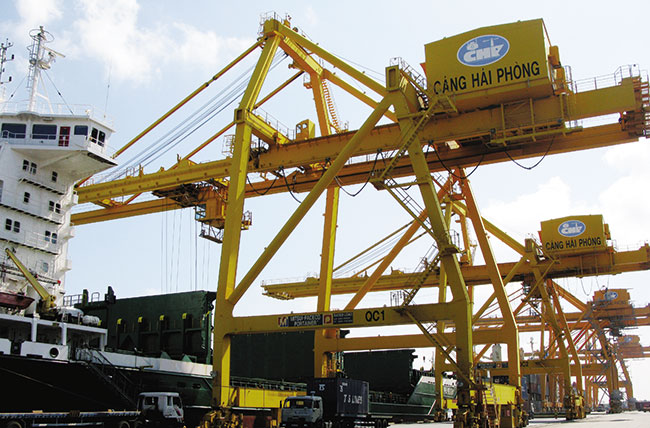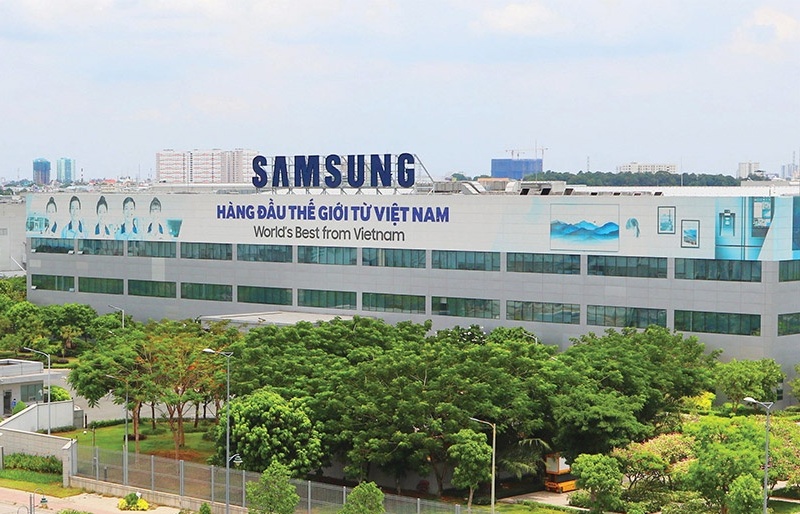Seaports sell majority stakes

State-owned Vinalines has been asked to divest from several major ports and operating companies-Photo: Le Toan
Prime Minister Nguyen Tan Dung recently issued Document No.67/TTg-DMDN, agreeing to reduce the state’s chartered capital holdings in Saigon port and Haiphong port from the previously rates of 50-75 per cent to 20 per cent. These majority stakes are currently held by Vinalines, the country’s state-owned shipping company.
Vinalines was also requested to divest all stakes from other seaports including Khuyen Luong, Danang, Vinalines-Dinh Vu, Cam Ranh, Nam Can, Nghe Tinh, Can Tho, and Cai Lan.
The latest decision showed Vietnam’s strong determination to divest state holdings from seaports in line with Document No.2342/TTg-DMDN, which was issued in late 2014. This document permitted Vinalines to lower its chartered capital ownership in Haiphong port to 65-75 per cent; in Saigon, Can Tho, Nghe Tinh, Cam Ranh, Nam Can, and Danang ports to 50-65 per cent; and in Khuyen Luong port 49 per cent. However, this divestment drive proved less effective than expected.
The new move is expected to make the industry more attractive to investors who are seeking controlling stakes in these ports.
“This is a golden chance for foreign investors to buy stakes in joint venture ports from state-run port operators, while earning the right to make important decisions with regard to the ports’ operations,” Ho Kim Lan, general secretary of the Vietnam Ports Association (VPA) told VIR.
“Additionally, most national ports have large areas of land close to rivers, and of course some sea frontage, which are very valuable for developing real estate projects. These areas are being leased at cheaper prices than other ones on the market. So, this is a good chance for investors who have plans to invest in realty,” he added.
The VPA, however, complained that business conditions for seaport operators remain problematic and will need a long time to change. The problems include inconsistent planning and development, unfavourable transportation between seaports and a persistent “ask-give” mechanism.
“Vietnam needs to have a specific management mechanism for seaports, as many countries have done over past decades. While waiting for this, risks for investors remain a matter of special concern, while the international competitiveness of local ports remains limited,” Lan suggested.
Vietnam is now home to 31 seaports with a total designed capacity of 470-500 million tonnes of goods per year. With the growth of goods volume hitting 9.1 per cent annually in the 2010-2014 period, and 14 per cent in 2014, the industry has attracted many domestic and foreign investors, including the US’ SSA Port, Singapore’s PSA, Denmark’s APM Terminals, and Hong Kong’s SSA Holdings.
Recently, Vietnam-Oman Investment JSC (VOI), belonging to Oman’s State General Reserve Fund (SGRF), has been seeking approval to buy part of Vinalines’ stake in Haiphong port, the largest seaport in the north.
T&T Group, a company operating in multiple sectors, has finished the acquisition procedures for Quang Ninh port. Meanwhile, the Vietnam Joint Stock Commercial Bank of Industry and Trade and Vietnam Prosperity Bank were also in the race to become strategic investors in Saigon port.
What the stars mean:
★ Poor ★ ★ Promising ★★★ Good ★★★★ Very good ★★★★★ Exceptional
Latest News
More News
- VinFast looks to long term with operational roadmap (March 12, 2025 | 15:32)
- Ho Chi Minh City looks to develop potential of Saigon River (March 12, 2025 | 13:34)
- Ho Chi Minh City International Financial Centre to be built in Thu Thiem New Urban Area (March 12, 2025 | 10:59)
- Singapore's YCH Group eyes investment opportunities in Lien Chieu Port (March 11, 2025 | 16:06)
- Trung Nguyen Legend breaks ground on Southeast Asia’s largest coffee factory in Buon Ma Thuot (March 11, 2025 | 14:51)
- Localities roll up sleeves to spur investment progress (March 11, 2025 | 11:17)
- Mekong Capital invests in TNH Hospital Group (March 10, 2025 | 14:36)
- Ho Chi Minh City Metro Line 1 officially inaugurated (March 10, 2025 | 14:15)
- Koreans investing across crucial sectors (March 10, 2025 | 09:06)
- FDI flows to Ho Chi Minh City hit $365 million in first two months (March 07, 2025 | 17:42)













 Mobile Version
Mobile Version